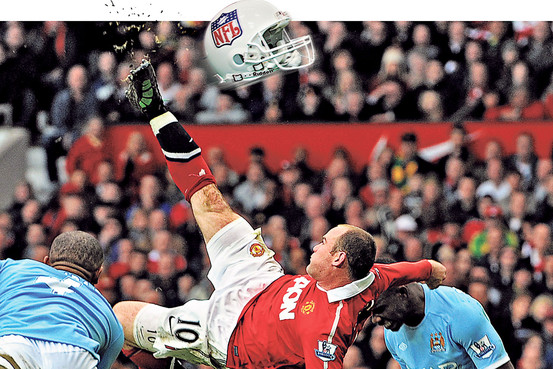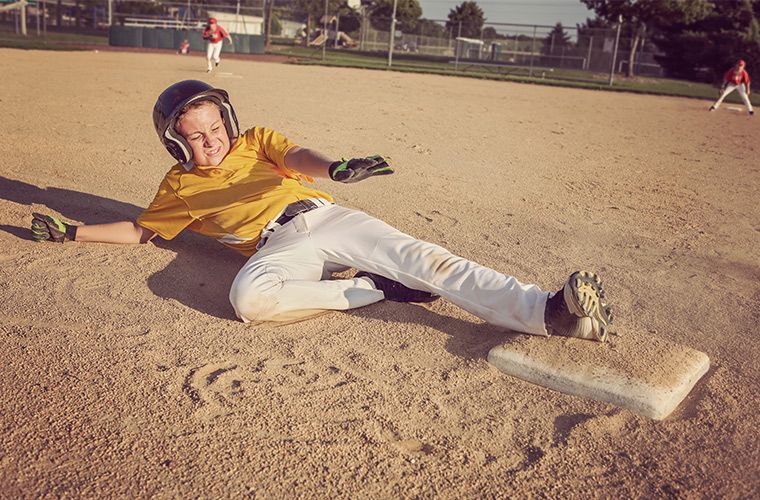is Lacrosse safer than Football?
Contact sports like lacrosse and football are popular among amateur and professional athletes. They offer a unique combination of athleticism, strategy, and physicality that can be incredibly thrilling for players and fans. However, there is a growing concern over the safety of these sports, especially concerning head injuries and other types of trauma that can result from high-impact collisions. As a result, many experts ask: is lacrosse safer than football? While both sports require similar protective gear and involve a particular risk, some critical differences may affect overall safety.
Is lacrosse as rough as football?
Lacrosse and football are both contact sports that require physicality and athleticism. However, regarding roughness, there are some critical differences between the two.
In terms of the level of contact, football is rougher than lacrosse. This is partly due to the nature of the game, which involves prominent, influential players colliding at high speeds. Football also tends to involve more head-to-head collisions, which can result in serious injuries such as concussions or traumatic brain injuries.
Conversely, lacrosse is still a physically demanding sport, but it tends to involve less high-impact collisions than football. The sport requires a combination of speed, agility, and endurance, and while there is undoubtedly physical contact involved, it tends to be less violent than football. Additionally, the protective gear worn by lacrosse players is designed to absorb impact and reduce the risk of serious injury.
Factor to Consider
Another factor to consider is the rules and regulations of each sport. In football, there are a lot of opportunities for players to deliver big hits and take down opponents with force. While there are indeed rules to prevent unnecessary roughness and protect player safety, these rules are only sometimes followed or enforced.
In contrast, lacrosse has more specific rules about what types of contact are allowed and what is considered a foul. Players who engage in dangerous or unnecessary roughness can be penalized or even ejected from the game. This can help to prevent rough play and reduce the risk of serious injury.
While lacrosse can be a physically demanding sport, it is generally considered less rough than football. However, both sports carry a certain level of risk, and athletes need to take steps to protect themselves by using proper technique and wearing appropriate safety gear.
Is lacrosse more dangerous than soccer?
Lacrosse and soccer are both popular sports that require a combination of speed, skill, and physicality. However, when it comes to overall danger, there are some critical differences between the two. Regarding the level of contact, lacrosse is more dangerous than soccer. Lacrosse involves a lot of body contact, stick checking, and physical play, which can lead to a higher risk of injury. Additionally, lacrosse players wear significant protective gear, which can create a false sense of security and lead to more aggressive play.
On the other hand, soccer is a sport that generally involves less physical contact and is often played without protective gear. While there is undoubtedly a risk of injury in soccer, the injuries are less severe than those in lacrosse. Common soccer injuries include ankle sprains, muscle strains, and cuts and bruises, while lacrosse injuries can include broken bones, concussions, and other serious injuries.
A factor to consider is the risk of head injuries
Another factor to consider is the risk of head injuries. While both sports carry a risk of concussion, lacrosse has been shown to have a higher rate of head injuries than soccer. This is due in part to the physical nature of the sport and the fact that players use sticks to check and defend against opponents.
While both sports carry a certain level of risk, lacrosse is generally considered more dangerous than soccer. It is essential for athletes in both sports to take steps to protect themselves, such as wearing appropriate safety gear, using proper technique, and following the rules and regulations of the game. Doing so can reduce the risk of injury, and they enjoy their sport’s physical and competitive aspects.
Is lacrosse more physical than football?
Lacrosse and football are contact sports requiring a significant amount of physicality. While both sports involve physical play, there are some critical differences in physicality. Football is generally more physical than lacrosse. Football is a sport that involves a significant amount of body contact and collisions, with large and powerful players running at high speeds to tackle and block their opponents. The physical nature of the sport has led to concerns about injuries such as concussions, broken bones, and other serious injuries.
In contrast, while lacrosse is still a physical sport, it tends to involve less high-impact collisions than football. Lacrosse is a sport that requires a combination of speed, agility, and endurance, and while there is undoubtedly physical contact involved, it tends to be less violent than football. The protective gear lacrosse players wear is designed to absorb impact and reduce the risk of serious injury.
Another factor to consider is the rules and regulations of each sport. In football, there are a lot of opportunities for players to deliver big hits and take down opponents with force. While there are indeed rules to prevent unnecessary roughness and protect player safety, these rules are only sometimes followed or enforced.

Is lacrosse a high-risk sport?
Lacrosse is a sport that involves physical contact, making it a higher-risk sport compared to non-contact sports like swimming or tennis. However, lacrosse is generally considered lower risk than other contact sports like football or rugby.
The risk of injury in lacrosse varies depending on some factors, including the age and skill level of the players, the rules and regulations of the game, and the type of protective gear being used. While there is always a risk of injury in any sport, the overall risk in lacrosse can be mitigated through proper training, equipment, and technique.
Common Injuries In Lacrosse
Common injuries in lacrosse include strains, sprains, and bruises, as well as more severe injuries such as broken bones and concussions. However, many of these injuries can be prevented through proper conditioning, stretching, warm-up routines, and appropriate safety gear such as helmets, gloves, and padding. Recently, there has been a growing awareness of the risks associated with head injuries in lacrosse, particularly concerning concussions.
Overall, while lacrosse is not without risk, it is a sport that can be played safely with proper preparation and precautions. Players should be aware of the risks and take steps to protect themselves, but they should not be discouraged from participating in the sport altogether. By following the best safety and injury prevention practices, lacrosse can continue to be a fun and rewarding activity for athletes of all ages and skill levels.
Is lacrosse as rough as football?
Lacrosse and football are contact sports that involve a significant amount of physicality and have the potential for injury. However, regarding roughness, the level of physicality and contact in these two sports can differ.
Regarding the overall level of roughness, football is rougher than lacrosse. This is partly because football involves a lot of high-impact collisions between players, with larger and more powerful players running at high speeds to tackle or block their opponents. These collisions can lead to injuries such as broken bones, concussions, and other serious injuries.
Conversely, lacrosse also involves physical contact, but collisions are less violent than those in football. Lacrosse players use their sticks to check and defend against opponents, which can create a physical environment but doesn’t involve the same kind of full-body contact seen in football.
Is it safe to play lacrosse?
Lacrosse can be a safe sport, provided proper precautions and safety guidelines are followed. Like any contact sport, there is always a risk of injury, but many ways exist to reduce that risk and prevent serious harm.
One of the most important ways to ensure safety while playing lacrosse is to wear appropriate protective gear. This includes a helmet, gloves, shoulder and elbow pads, a mouthguard, and rib pads for male players. The equipment should be appropriately fitted to the player and maintained in good condition to ensure it effectively reduces the risk of injury.
It is also essential for players to follow the rules and regulations of the game. This includes avoiding dangerous checks, such as high or late hits, and not engaging in behavior that could cause injury to themselves or other players. Coaches and officials enforce these rules and ensure the game is played safely. Proper conditioning and training can also help to reduce the risk of injury in lacrosse. This includes building strength and endurance through exercise, improving flexibility and range of motion through stretching, and practicing proper stick handling and checking techniques.
Finally, players who experience any injury symptoms, such as headaches, dizziness, or pain, should immediately seek medical attention. This can help to prevent further damage and ensure that the player receives the appropriate care and treatment.
FAQs
Is lacrosse safer than football?
Overall, lacrosse is considered a safer sport than football due to the difference in the level and type of physical contact involved in each sport. However, both sports have some level of risk and require proper safety precautions.
What types of injuries are common in football and lacrosse?
In football, common injuries include concussions, fractures, sprains, and strains. In lacrosse, injuries often include sprains, themes, contusions, and lacerations from stick checks.
Do football and lacrosse players wear protective gear? Answer: Football and lacrosse players wear protective equipment, including helmets, shoulder and elbow pads, and gloves. Football players also wear additional gear, such as mouthguards and rib pads.
How can athletes minimize the risk of injury in football and lacrosse?
Athletes can reduce the risk of injury by wearing appropriate protective gear, following the game’s rules, practicing proper technique, and maintaining adequate conditioning and strength.
Can girls play football and lacrosse safely?
Girls can play football and lacrosse safely when appropriate safety precautions are taken, such as wearing protective gear and practicing proper techniques. Many girls and women currently play both high school and collegiate sports. However, there are some differences in the rules and style of play for girls’ lacrosse, a non-contact sport at the high school level.



